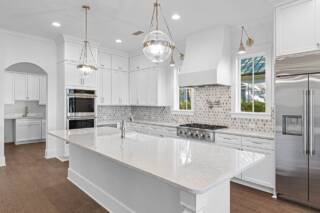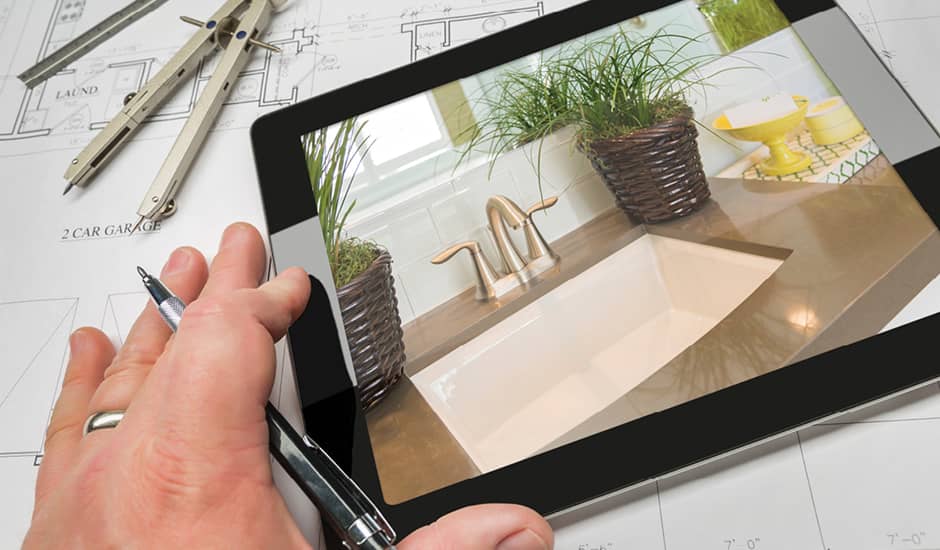
Selecting the appropriate color scheme to use in your kitchen and bathroom may not look very significant; however, it can completely transform the appearance and feel of your house. They are the spaces which we occupy in our daily life, and the colors you apply can change your mood and even make a room look neater or more stylish.
Most homeowners are confused about the choice of color. That is where a kitchen and bath design course can be useful. With a little training or advice, you could learn the basics of color and be able to make positive design decisions.
So, how do you select the right colors for your kitchen and bath—and what are some of the things you need to remember in the process? Let’s learn more about it.
Why Color Matters More Than You Think
Colors do not just make a place pretty; they have an effect on our emotions and the way we experience a room. Light colors may be used to expand small spaces, whereas dark colors bring in warmth and depth. To make a room cool, add colors such as blue and green, which are cool colors. To give a room a lively touch, add colors such as red and yellow, which are warm colors.
In your kitchen and bath design course, you acquire the knowledge of utilising color to set the proper mood and functionality of any given space. Such as the colors used in kitchens are cool and refreshing, whereas those used in the bathrooms tend to be more relaxing.
Start with the Mood You Want
Consider the type of mood you would like the room to create before selecting the particular colors. Would you like your kitchen to be bright and happy? Or is it that you want a smooth, contemporary appearance? Do you want a spa-like atmosphere in the bathroom or bold and dramatic?
The kitchen and bath design course will explain the use of mood boards and inspiration samples, which can assist in defining your style. When you have your goal set, it becomes easier to select a color scheme.
Understand the Role of Lighting
Lighting affects the way the colors are viewed. A light grey room with good light in a showroom can appear dull in your dark bathroom. Natural light depicts true color, whereas artificial lights can give warm or cool tones.
In a kitchen and bath design course, students are taught to test paint samples in varying light conditions. You can do the same too, purchase sample paints and look at them in your area at different times of the day to make the final decision.
Apply the 60-30-10 Rule
It is an easy interior design principle that many designers follow. It works like this –
- A dominant color (normally a neutral color) should cover 60% of the room.
- A secondary color that assists the primary one is 30%
- 10% is an accent color to add interest
As an example, in a kitchen you can have soft white walls and cabinets (60%), navy blue lower cabinets or backsplash (30%), and gold handles or green plants as an accent (10%). This is a rule that is commonly discussed in a kitchen and bath design course for a balanced color schemes.
Neutrals as a Safe Base
Neutral hues as white, beige, grey, and light taupe are extremely kitchen and bathroom-friendly. They provide a neat, classical appearance and enable them blend with accessories or minor details without the need for an entire redesign.
Among the initial lessons you grasp in a kitchen and bath design course is constructing your design on a neutral foundation, and then adding interest to it by layering colors or textures on top of it. The neutrals are also more lasting and attractive to future buyers in case you intend to sell your house.
Don’t Forget the Finishes
Color is not just about paint. Your tiles, countertops, flooring, cabinetry, and fixtures also have their own colors and undertones that must complement each other.
One of the best things a good kitchen and bath design course will teach is how to determine undertones; i.e., whether a white is warm (yellow undertones) or cool (blue undertones). It is the combination of incorrect undertones that can ruin your space’s whole appearance, despite all the products appearing great individually.
Think Long-Term, Not Just Trends
There is a temptation to choose bright, fashionable colors that you can find on the Internet, but trends come and go. The current favourite colours might become old-fashioned within a couple of years. Rather than picking out bold colors in large spaces such as cabinets or tiles, incorporate them into smaller details such as towels, artwork, or stools.
A kitchen and bath design course will assist you in acknowledging the classic color selections and those based on current trends. This information can assist you in making thoughtful, permanent choices for your house.
Take Inspiration from Nature
Nature suggests marvellous color solutions. Neutrals inspired by stone, as well as soft blues, leafy greens, and earth tones, can add balance and serenity to a room. These hues are also organic and comfortable to reside with permanently.
Designers in most of the kitchen and bath design course modules are urged to utilize outdoor colors such as wood, water, sand, and sky as a source of color inspiration. The result of this practice is palettes that are earthy and revitalising.
Conclusion
Color is an effective tool in designing rooms. So, it is important to decide whether you want to go with peaceful and playful, modern, or classic with the colors. With just a bit of kitchen and bath design course knowledge, you will end up with rooms that not only look good but also feel great and pass the test of time.
Ready to learn how to design like a pro? Discover more about the training with an expert by visiting SEN Design Group and make the first step towards your dream kitchen and bath today.




